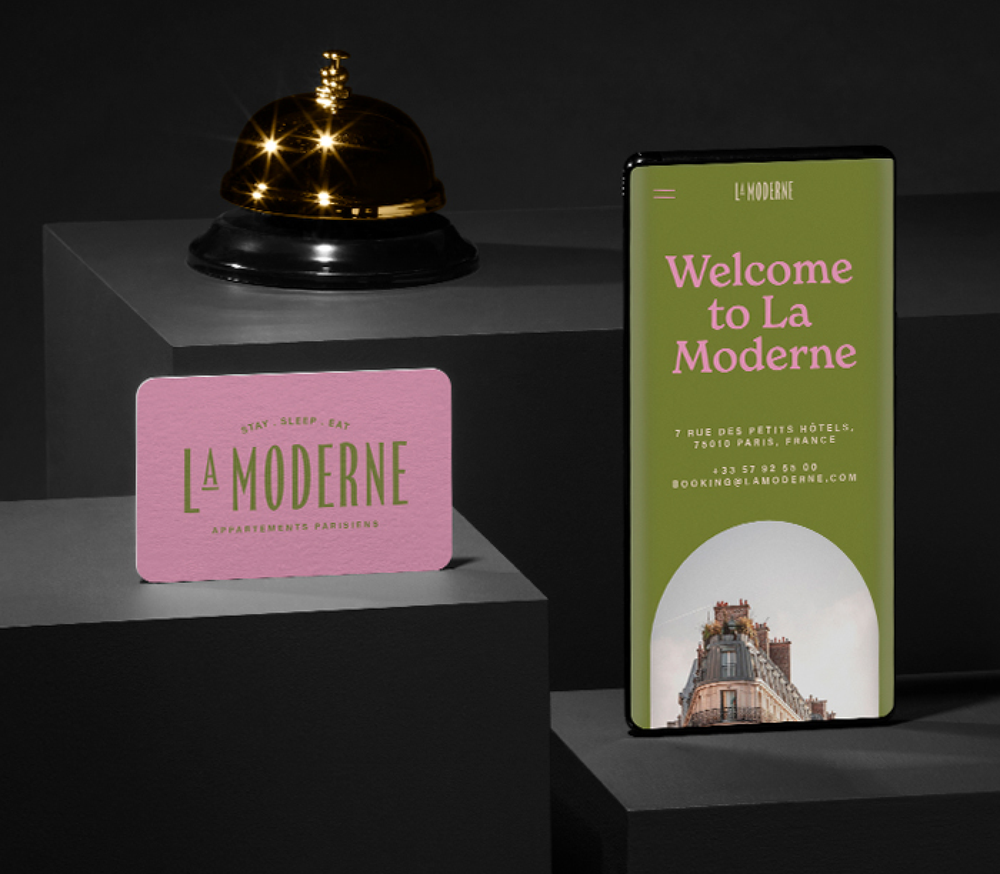Starting a new project? Download our free workbook to build your brand with confidence.
The email you entered is invalid.
Thank you for subscribing.
By entering your email, you indicate that you have read and understood our Privacy Policy and agree to receive marketing from Squarespace.
Creating a brand identity is key to standing apart from your competitors. And that visual identity should apply to your brand no matter where you’re showing up, including in-person appearances like local markets or live classes and events.
Squarespace has all the tools you need to create a professional website design that reflects your brand to your visitors. Our partnership with MOO means that you can bring that same sharp look to physical brand items. We spoke with Yoshi Takagi, Head of Brand Design at MOO, for tips on how to create and share your brand’s visual identity effectively.
Visit Business Tools in Squarespace Extensions for 20% off your first MOO order. (Only for Squarespace customers.)
Designing your brand’s visual identity
It’s important to define your brand personality before you start looking at typefaces, color palettes, and images. Ask yourself questions like:
If my brand were a person, how would I describe them? Are they bold or understated? Open or reserved?
What is my brand’s mission?
What are our brand values?
How do I want people to feel after they interact with my brand?
Yoshi follows a similar path when designing a brand identity, first learning about its principles, audience, and overall concept. “Understanding your brand principles is important because it enables you to grow with the right attitude and materials that can convey your brand ethos,” he says.
After developing a strong sense of who your brand is and who it’s for, you can dive into the design elements you need to bring those brand principles to life.
Applying your visual identity
Your brand needs to be active in multiple channels at once, from email marketing to social media and in-person appearances, to reach the biggest audience. But not every platform gives you the same amount of design control as a website does.
No matter the platform, Yoshi recommends you keep your brand image consistent. “Even when the primary brand assets are not used, consistency can be achieved through other ways, such as layouts and props,” he says. “For social media, where you might have less design control, you must be consistent with the brand image through the content assets and adhere to your design principles in all areas, including photography, tone of voice, and sound.”
When making content for these different channels, return to the questions you asked yourself when designing your visual identity. Then, list out the design options you can control and how you can tailor them to your brand’s personality and principles.
“For example, you might think about all the aspects that convey personality—the voice that your brand has, features that can help quickly convey character, and so on,” Yoshi says. “If you have a brick-and-mortar brand, you want your customers to experience the brand messages you want to convey, from the scent on their first step into the store to the sounds they hear, and from the hospitality and to the brand collateral you have to offer.”
In your online channels, applying your visual identity could look like shooting photos for social media with a more neutral color palette to communicate softness, or adding text animations to your website to give the page more energy.
Choosing the right ways to represent your brand
While you want your brand to show up in many places to expand your reach, that doesn’t mean you need to be everywhere at once. Think about which platforms can have the greatest impact for your brand and how you can carry your brand personality into each.
For example, a website gives you the design control to tell your brand story and tools to communicate with your audience. But a wedding photographer will want a website that shows off their portfolio and social media to match, whereas a writer might focus on sharing regular blogs and newsletters. The photographer will want to be on visual-forward social media, and the writer might direct their focus to a written format and communities where their audience is.
Physical businesses, service providers, or creatives who do a lot of networking might benefit from branded paper goods. “Impressive and memorable business cards that reflect who you are is a must-have physical item on the go,” Yoshi says. When choosing what to invest in, “make sure you're equipped with tools that help you communicate your brand message—a nice wrapping solution with a branded sticker and a little personal tone of voice, for example, can give online retailers a human touch.”
Remember that your brand can always evolve. “Your visual identity package doesn't cover everything you'll need for your company's next many decades of business,” Yoshi says. Tools that make it easy to update or refresh your design are key to having a brand that grows as you and your business do.
Ready to launch your brand’s visual identity? Check out Squarespace’s website design tools and MOO’s range of custom products.

